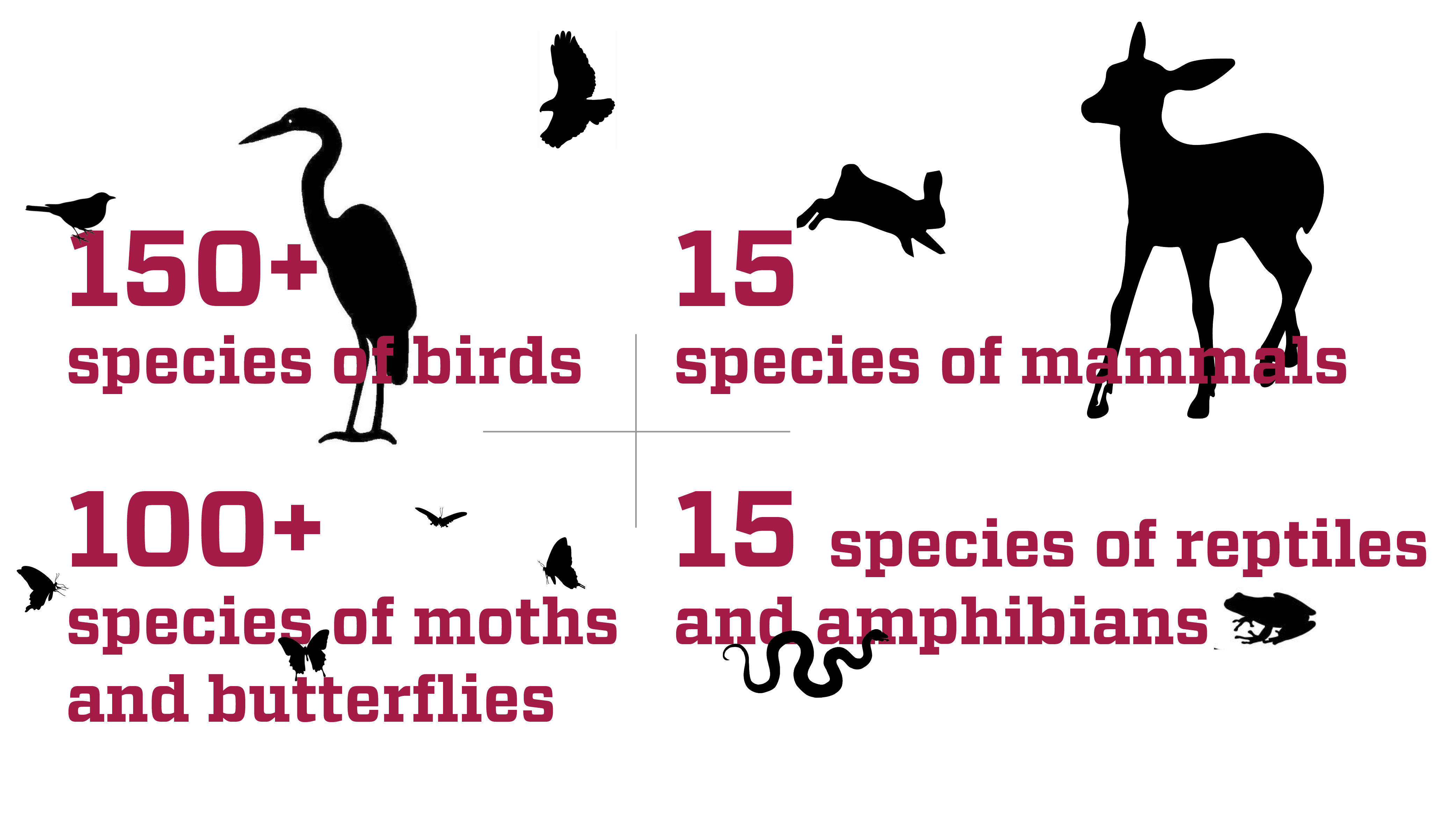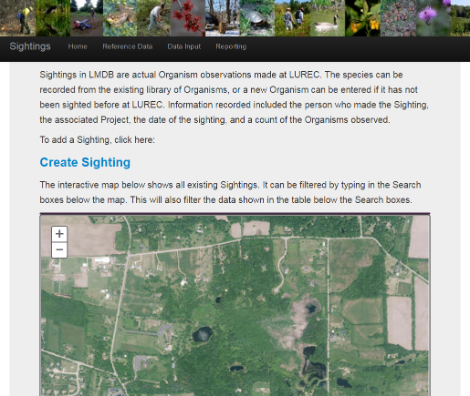Biodiversity
Biodiversity is the variety of life in all of its many forms. This variety is characterized as ecological diversity and genetic diversity as well as the more familiar species diversity. The 98-acre Retreat & Ecology Campus contains a number of human landscapes and natural habitats which are home to a wide range of species as well as possible genetic varieties. Some of the natural habitats include oak-hickory woodlands, shrublands, small patches of grasslands, a small pond, and wetlands.
Recent inventories and surveys of LUREC fauna has so far revealed:

Presently, Loyola is engaged in recording the current biodiversity found on the property and is developing a database that can be used by faculty and students to record or retrieve interesting information concerning that biodiversity.
This information can be used as baselines for current and future biodiversity surveys. For those who are interested, it can also provide exact locations on the property where certain organisms can be found or have been found in the past. Such data will also assist in planning and evaluating our restoration work.
This screenshot shows part of the Land Management Database application being developed to store and present information on research activities done at and around LUREC.
Biodiversity is the variety of life in all of its many forms. This variety is characterized as ecological diversity and genetic diversity as well as the more familiar species diversity. The 98-acre Retreat & Ecology Campus contains a number of human landscapes and natural habitats which are home to a wide range of species as well as possible genetic varieties. Some of the natural habitats include oak-hickory woodlands, shrublands, small patches of grasslands, a small pond, and wetlands.
Recent inventories and surveys of LUREC fauna has so far revealed:

Presently, Loyola is engaged in recording the current biodiversity found on the property and is developing a database that can be used by faculty and students to record or retrieve interesting information concerning that biodiversity.
This information can be used as baselines for current and future biodiversity surveys. For those who are interested, it can also provide exact locations on the property where certain organisms can be found or have been found in the past. Such data will also assist in planning and evaluating our restoration work.
This screenshot shows part of the Land Management Database application being developed to store and present information on research activities done at and around LUREC.

